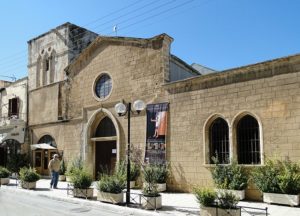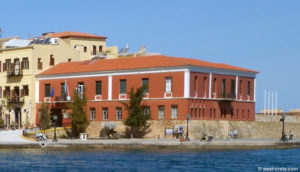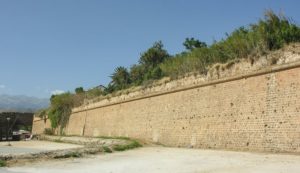Chania is the most evocative Crete city, with its lovely Venetian quarter bisected by narrow lanes and climaxing at a breathtaking harbor. Remnants of Turkish and Venetian architecture abound, with ancient townhouses now converted to boutique hotels and atmospheric restaurants. Some colleagues of mine who run Chiropractor Edmonton visited Chania a few years back and shared some of these amazing sites to see. Here are the top must-see attractions in Chania, Greece.
 Chania Archaeological Museum
Chania Archaeological Museum
The setting of the elegantly restored sixteenth-century Venetian Church is enough reason to visit the collection of artifacts from Roman to Neolithic times. Standout highlights include late-Minoan clay baths, a large glass case, Hellenistic gold jewelry, Roman floor mosaics, as well as clay tablets with Linear A and B script. A private collection of Minoan clay, jewelry, and pottery models is downstairs. The statue of Diana is also particularly impressive.
Venetian Harbor
There are not a lot of places where the historic grandeur and charm of Chania are more appreciable than in Venetian Harbor. It is lined by pastel-colored structures that dot the narrow lanes lined with taverns and shops. The eastern side of this historic site is overlooked by the Mosque of Kioutsouk Hasan, while some steps further east is the Grand Arsenal which houses the Center of Mediterranean Architecture. At sunset, you can join tourists and locals on a stroll to the lighthouse that stands over the harbor entrance.
 Maritime Museum of Crete
Maritime Museum of Crete
Part of the Venetian-built Firkas Fortress, this museum celebrates the nautical tradition of Crete with memorabilia, maps, photographs, paintings, naval instruments, and model ships. A room is devoted to historical sea upstairs, while there is a detailed documentation of the World War II-era Crete Battle. If you are lucky enough, you might see some artists working on new ship models in the workroom.
Firkas Fortress
The Firkas Fortress is the best-preserved section of the vast fortifications that were constructed by the Venetians to protect Chania from invading Turks and marauding pirates. In 1645, the Turks invaded and turned the fortress to a prison and a barracks. There is a spectacular view of the harbor from the top.
Byzantine and Post-Byzantine Collection
In the intensely restored San Salvatore Church, this small but captivating collection of artifacts, coins, jewelry, and icons dating back to 62 AD. Highlights include a panel attributed to El Greco, an icon of Saint George slaying a dragon, and an early-Christian basilica. The structure has a lot of architectural features from its many occupiers.
 Venetian Fortifications
Venetian Fortifications
Part of this defensive system was started by Michele Sanmichele in 1538; the extensive fortifications of Chania remain impressive. The western wall is the best-preserved running from the Siavo Bastion to the Firkas Fortress. The bastion offers impressive views of the ancient town.

Recent Comments